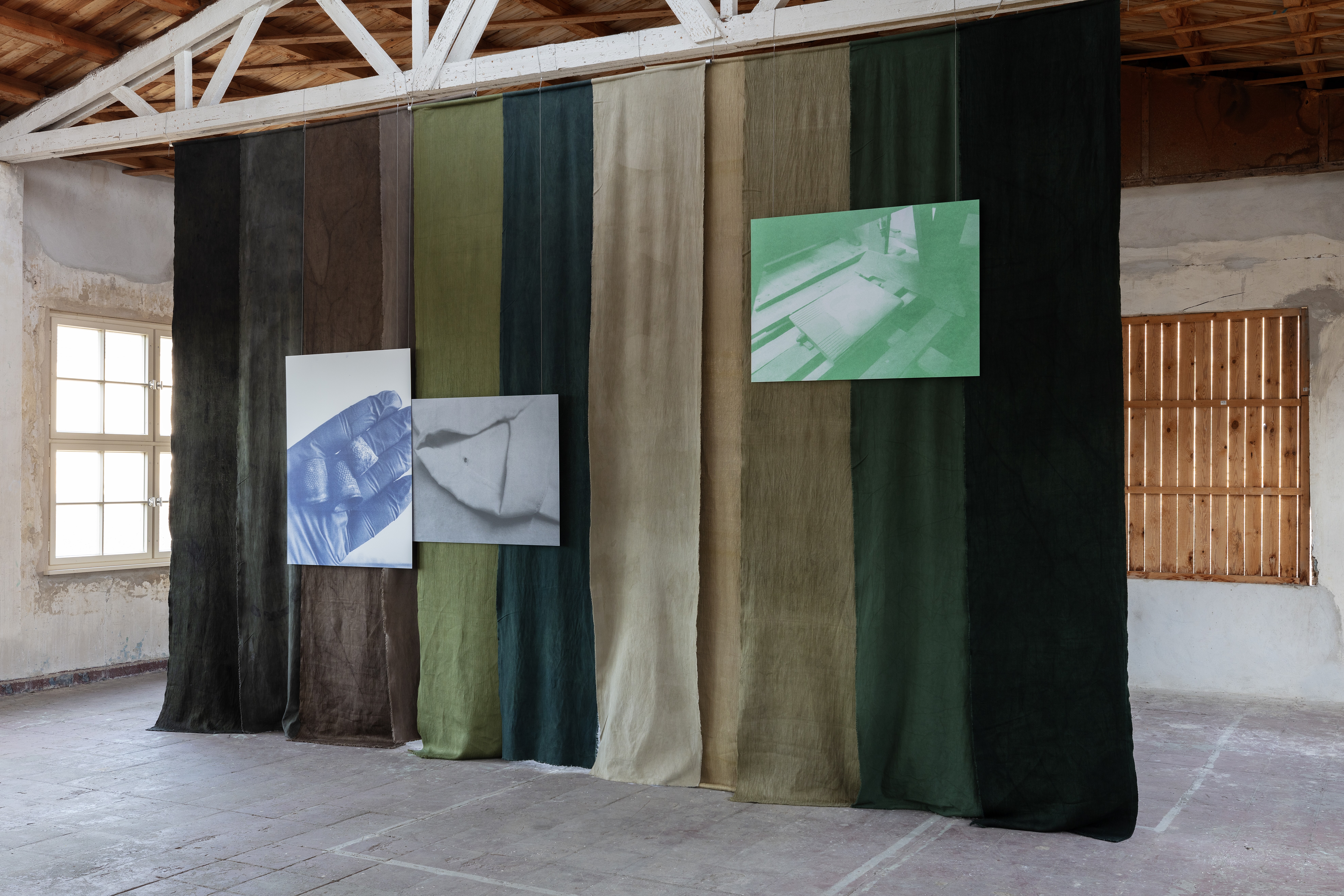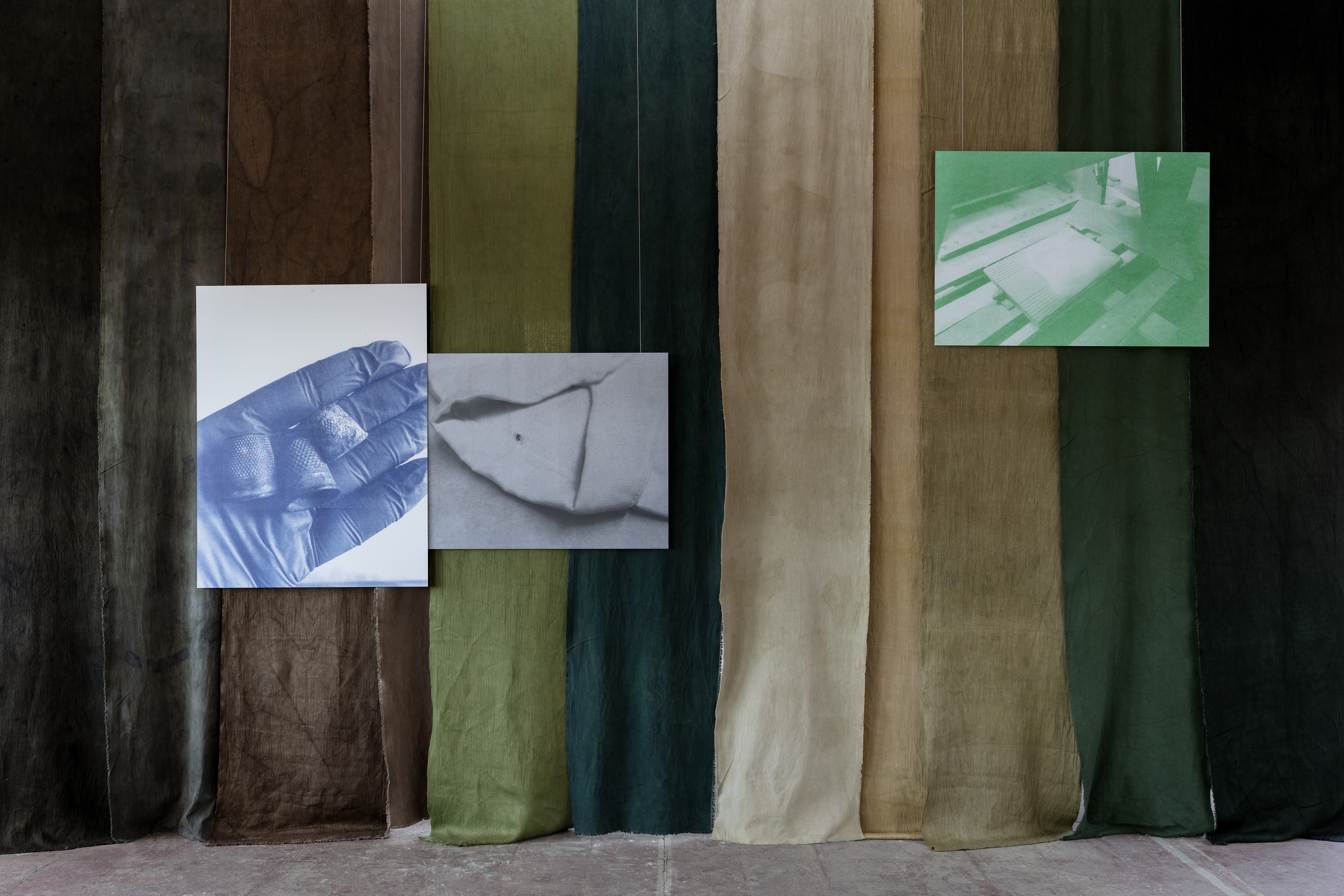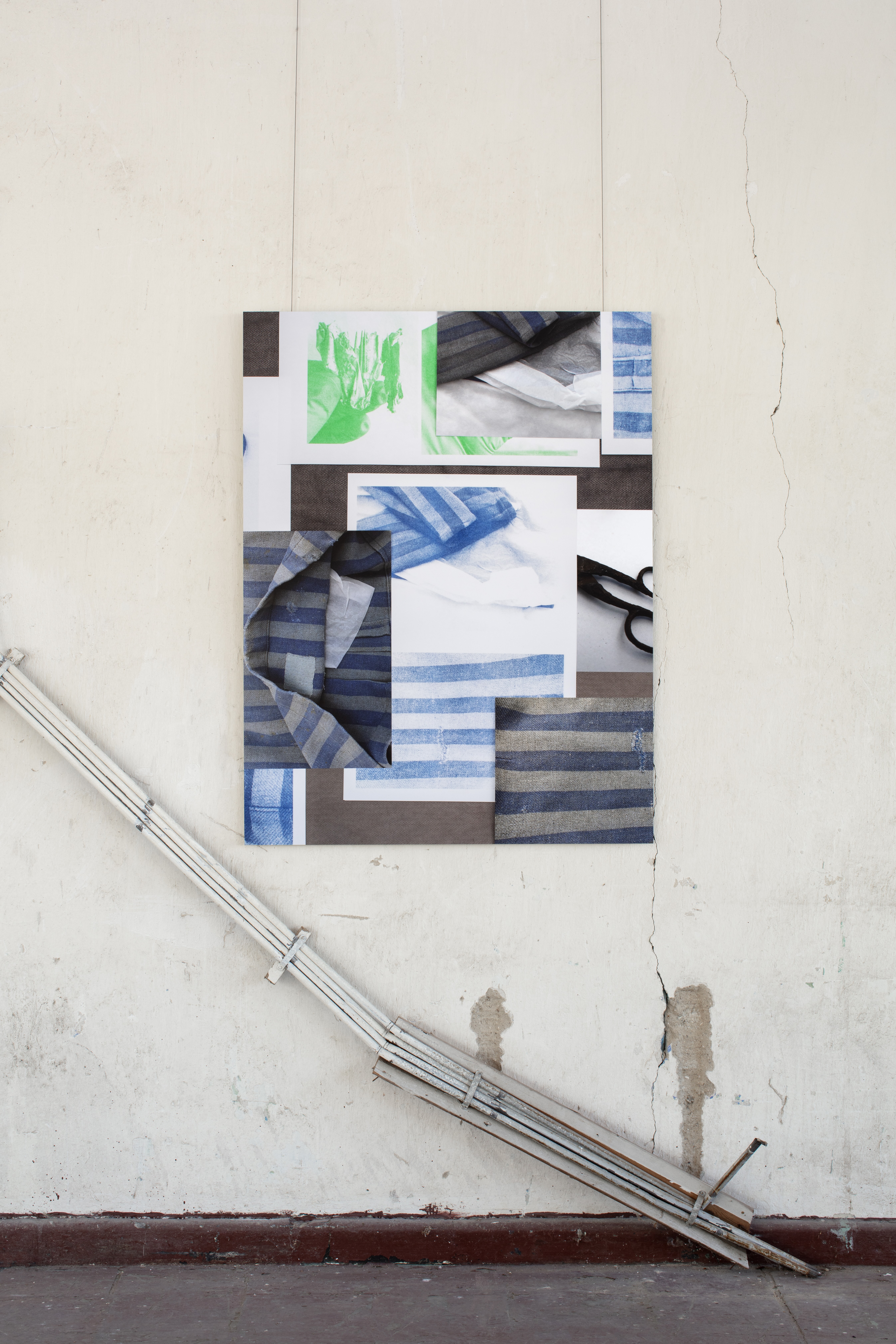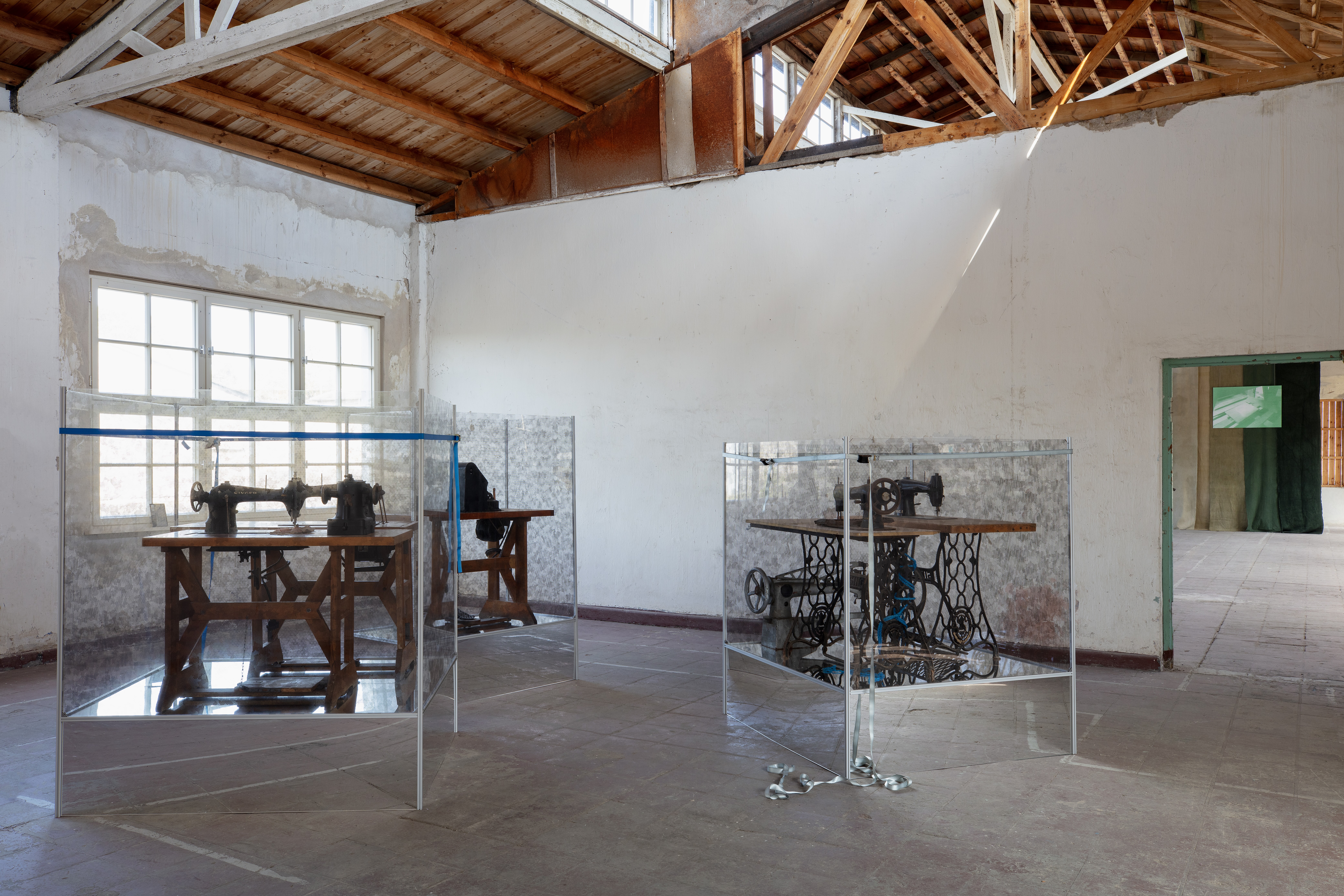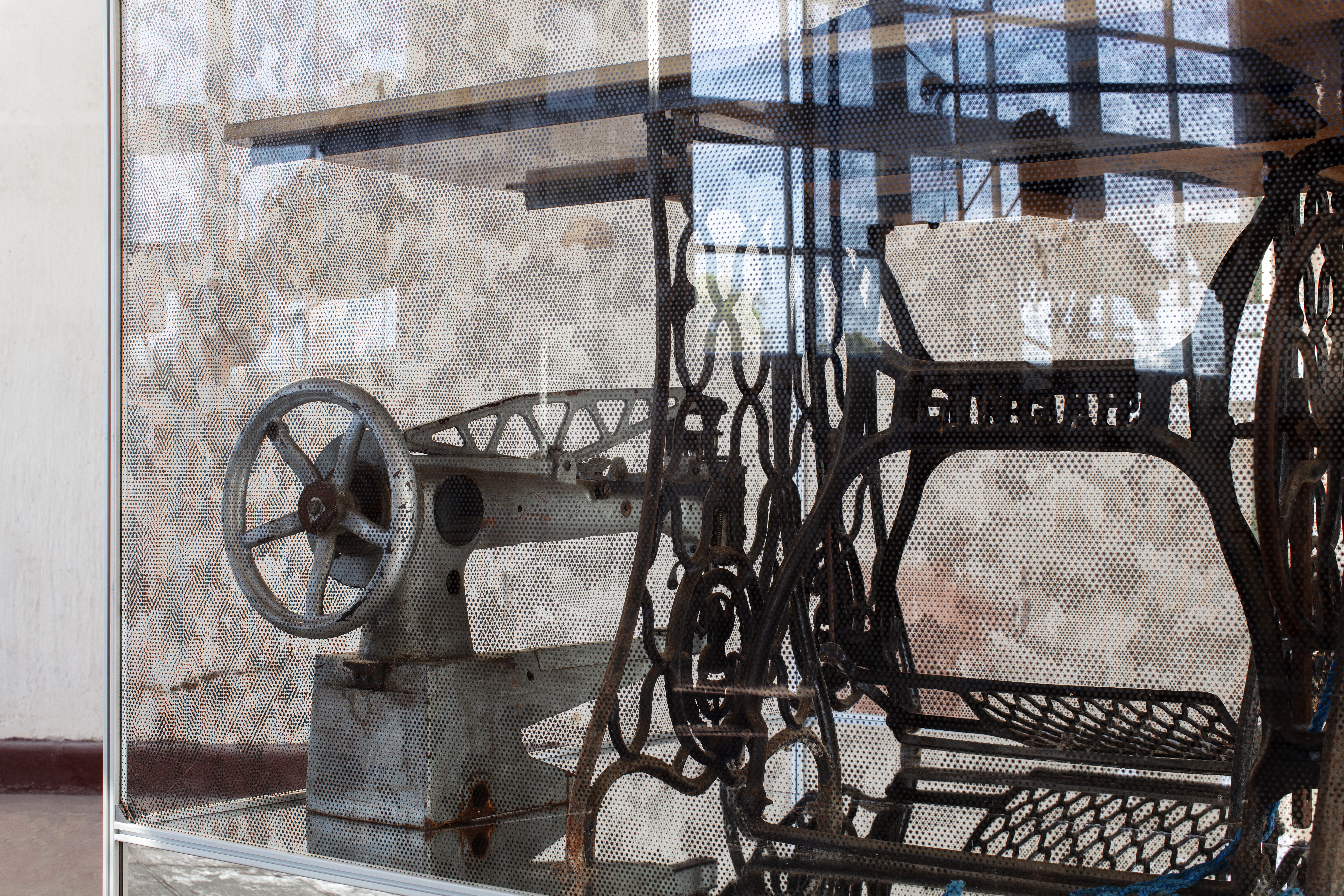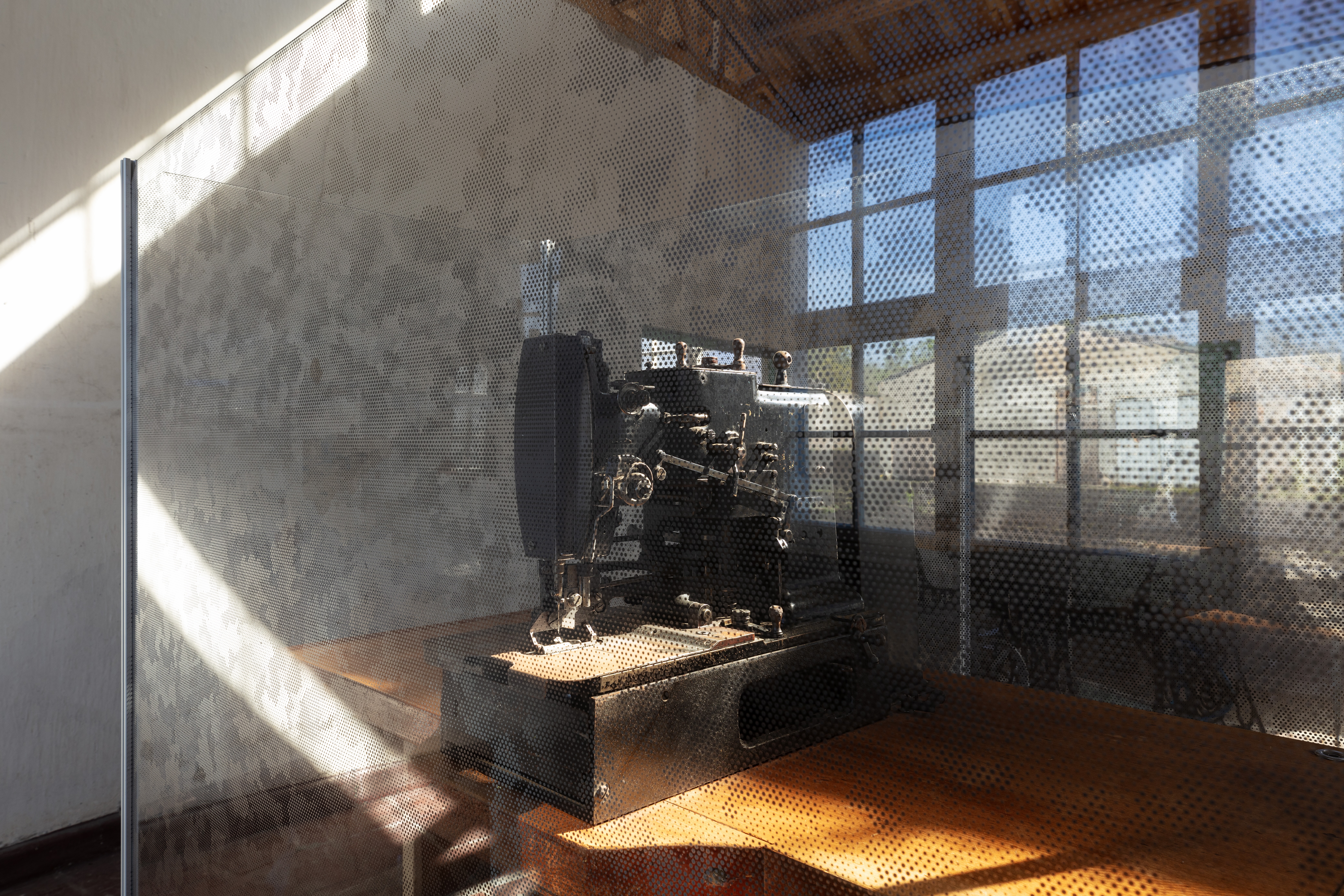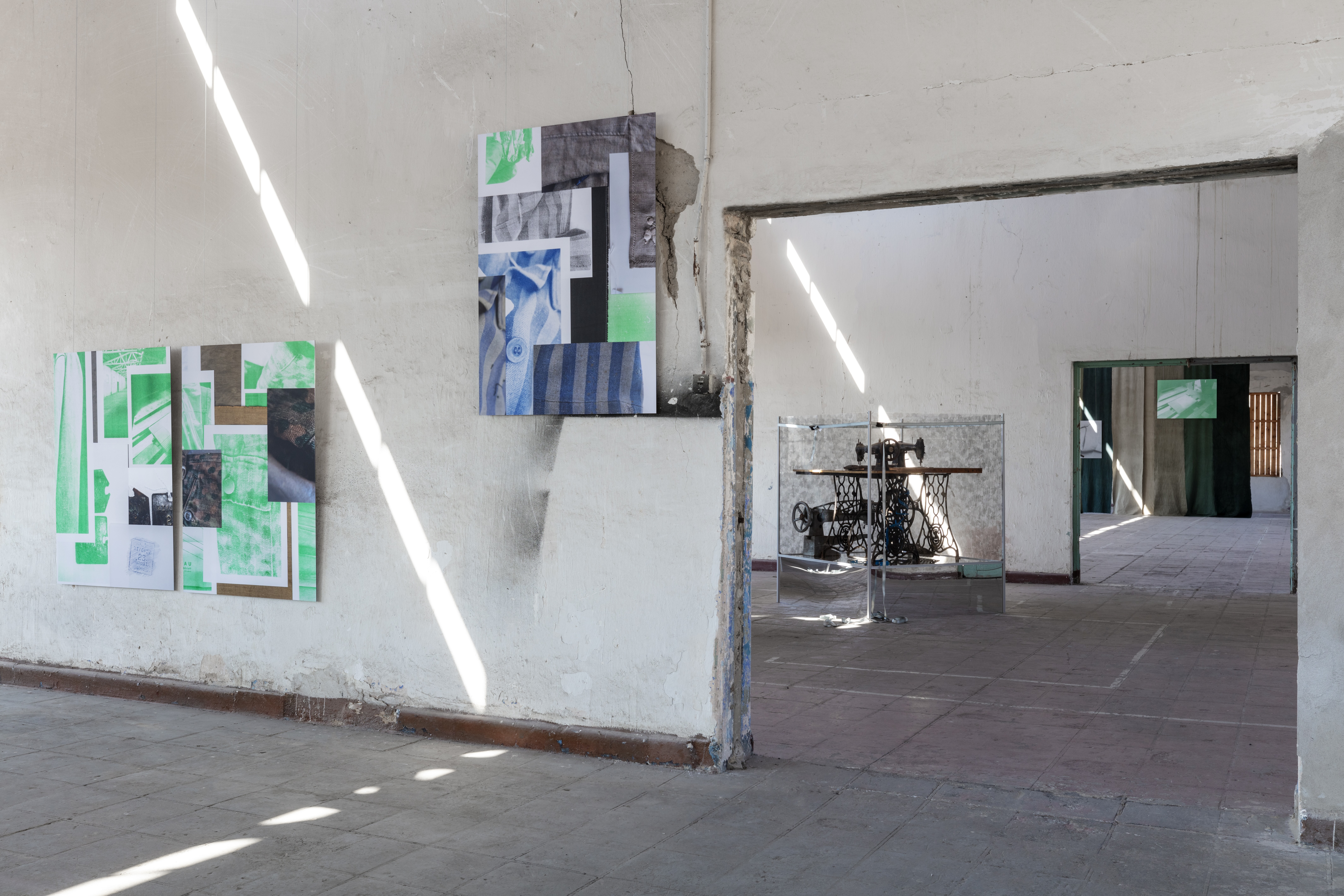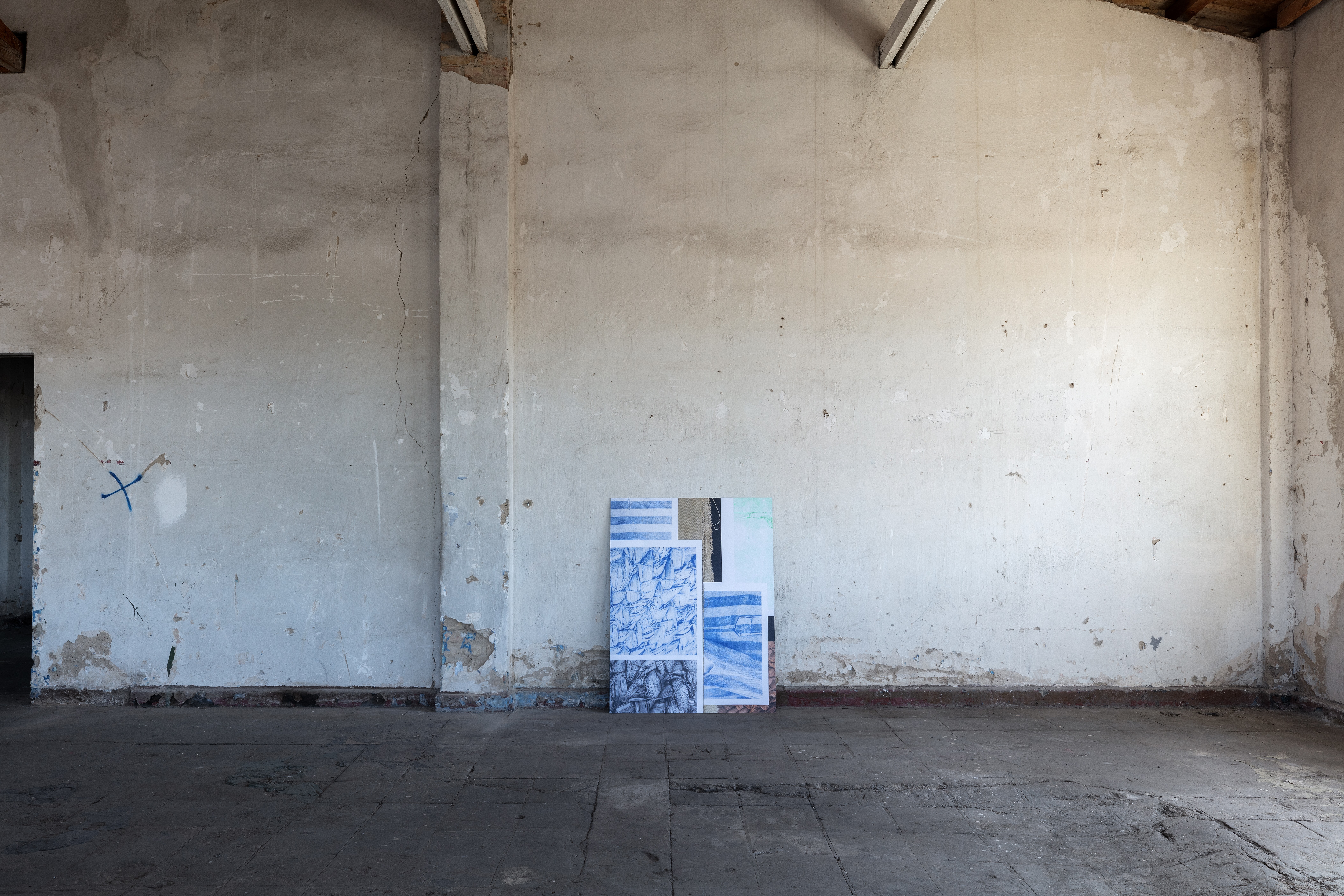Textile production at Ravensbrück Concentration Camp began as early as 1939. With the establishment of Texled, an SS-owned company, and its relocation from Dachau to Ravensbrück in 1941, the textile workshops on site became a leading center of production for weaving, cutting, sewing, and repairing. Prisoner clothing for all concentration camps was produced there, together with Wehrmacht and SS uniforms and the uniforms of the female guards of the concentration camp. Although the production of prisoner clothing was discontinued by 1943, the production of uniforms for the ongoing war increased. Testimonies and company reports document the increasingly violent working conditions in the workshops.
Dominique Hurth has been researching the history of the Ravensbrück Women's Concentration Camp for many years. Through encounters in archives, collections, historical sites, and in dialogue with experts, objects, and documents, she has developed an artistic research practice that lays bare the traces of this history of forced labor and its wider social legacy. In 2025, the Ravensbrück Memorial Museum presents a new installation by the artist about the textile history of the concentration camp, a subject previously seldom researched.
Accompanied by textiles, text, and images, Dominique Hurth's site-specific installation addresses not only forced labor and the violent history of uniform production, but also the economy behind these structures and their consequences for the present day. Objects from the memorial's collection, which have never been exhibited before, will be embedded in the exhibition. The weaving mill in the former “Industriehof” (“industrial yard”), one of the few remaining buildings on the former camp site, will become an exhibition space; the history of forced labor will be addressed directly at the very place where it occurred.
From May 2nd until August 17th 2025, this space will be reactivated in the form of a preamble to the forthcoming main installation (24.08.-31.10.2025), with a focus on the observation of artifacts from the memorial's collection and reports on forced labor that deal with textile production. The project will be accompanied by a series of events scheduled for the fall.
Dominique Hurth has been researching the history of the Ravensbrück Women's Concentration Camp for many years. Through encounters in archives, collections, historical sites, and in dialogue with experts, objects, and documents, she has developed an artistic research practice that lays bare the traces of this history of forced labor and its wider social legacy. In 2025, the Ravensbrück Memorial Museum presents a new installation by the artist about the textile history of the concentration camp, a subject previously seldom researched.
Accompanied by textiles, text, and images, Dominique Hurth's site-specific installation addresses not only forced labor and the violent history of uniform production, but also the economy behind these structures and their consequences for the present day. Objects from the memorial's collection, which have never been exhibited before, will be embedded in the exhibition. The weaving mill in the former “Industriehof” (“industrial yard”), one of the few remaining buildings on the former camp site, will become an exhibition space; the history of forced labor will be addressed directly at the very place where it occurred.
From May 2nd until August 17th 2025, this space will be reactivated in the form of a preamble to the forthcoming main installation (24.08.-31.10.2025), with a focus on the observation of artifacts from the memorial's collection and reports on forced labor that deal with textile production. The project will be accompanied by a series of events scheduled for the fall.
"Maschinen dröhnen, Nadel schleppt den Faden, scharfes Messer glänzt, schneidet entzwei und sticht." (Präambel)
(‘Machines roar, needle drags the thread, sharp knife shines, cuts in two and stabs.’ Preamble)
Hand-dyed drill (each 75 x 425cm), dyed a.o. with birch, pomegranate, nettle; Inkjet Prints (100 x 130cm and 84 x 119cm); Aluminium, Print on Plexiglas, Mirrors, Sewing Machines and Buttonhole Machine from the collection of the memorial of Ravensbrück; MDF, Steel, Glass, Hand-dyed drill, Inkjet Prints, Text on Vinyl and Riso prints (8 tables each 118 x 124 x 75cm)
2025
Ravensbrück Memorial Museum, in the weaving mill of the former industrial yard (May 2nd - August 17th, 2025).
Project coordination: leo
Production assistance: Jakob Urban, Madeleine Duflot
A project by the Ravensbrück Memorial Museum, Brandenburg Memorials Foundation. Funded
by the German Federal Cultural Foundation. Funded by the Federal Government Commissioner for Culture and the Media. Supported by the Fondation Tour du Monde.
Installation photographs:
CHROMA
(‘Machines roar, needle drags the thread, sharp knife shines, cuts in two and stabs.’ Preamble)
Hand-dyed drill (each 75 x 425cm), dyed a.o. with birch, pomegranate, nettle; Inkjet Prints (100 x 130cm and 84 x 119cm); Aluminium, Print on Plexiglas, Mirrors, Sewing Machines and Buttonhole Machine from the collection of the memorial of Ravensbrück; MDF, Steel, Glass, Hand-dyed drill, Inkjet Prints, Text on Vinyl and Riso prints (8 tables each 118 x 124 x 75cm)
2025
Ravensbrück Memorial Museum, in the weaving mill of the former industrial yard (May 2nd - August 17th, 2025).
Project coordination: leo
Production assistance: Jakob Urban, Madeleine Duflot
A project by the Ravensbrück Memorial Museum, Brandenburg Memorials Foundation. Funded
by the German Federal Cultural Foundation. Funded by the Federal Government Commissioner for Culture and the Media. Supported by the Fondation Tour du Monde.
Installation photographs:
CHROMA

